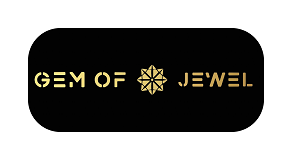Jewelry Manufacturing Process

This is how we do it !
1) 3D Jewelry Design Model:
- In the jewelry industry, CAD models are used to design jewelry of any shape or materials.
- What are some benefits of working with CAD programs?
- One of the main benefit of working with a CAD file is that the 3d designer can see what the finished jewelry will look like early on in the process.
- Aside from making life easier for the jewelry studio, a digital model allows the client to make sure they like the design before it’s actually produced.
- Finally, a CAD model allows the jeweler to estimate the metal weight beforehand; as a result, the client can have a price estimate before even committing to production.
- This article gives an overview of RPT, areas of applications, and its noteworthy benefits to manufacturing industries.
- 3D wax serves as the basis for the next step, the wax model. In most modern jewelry production, the manufacturer uses a 3d printing machine to print a wax model made out of resin.
- After the creation, the sculptors wax carving is embedded in a metal flask which will be filled with plaster-like investment and left to harden.which usually doesn’t take more than 48 hours.
- Jewelry casting is the process by which a wax pattern is made into a jewelry mold and then filled with molten metal or silver to create a custom piece of jewelry. It is also called lost wax casting because the wax is always “lost” during the process of making jewelry.
- In the next step, the jewelry goes through the casting process. The wax is melted away and is replaced with your metal of choice in molten form, usually gold, silver, or platinum. The metal then dries into the shape on your jewelry. This technique is called Lost wax casting.
- With a wax-free mold, manufacturers will then pour molten metal or silver into the hallow cavity that is in the mold with a vacuum machine or a centrifugal casting machine.
- After a few minutes, jewelry makers will put the mold into a bucket of cold water and mold will dissipate. You will then be able to reach in and pull out a piece of jewelry that is the exact replica as the initial wax pattern.
- Finishing and polishing a metal jewelry design can mean a highly-polished surface to one designer or a finish that is matte and darkened with patina to another.
- The first step to a nice finish is ensuring the surface of your design is ready for polishing.
- Each part of the jewelry will be polished individually and then assembled in as per final design.
- Stone setting is one of the essential stages of jewelry making,
- For this step, the diamond setter finally adds the diamonds or other gemstones onto your jewelry piece. He carefully sets the central stone into the mount. If side stones are involved, the setter needs to hand drill for these before setting. Using a microscope, they then set each separate stone.
- In the final stage, a polisher works to make sure the metal is polished to perfection so it’s as shiny as possible. Any final additions such as engravings are also applied. Finally, the jewelry is inspected and each detail is analyzed to make sure production was successful.
- After successful production and quality check, we do inside engraving and stamping of whatever metal purity it is made up of.
